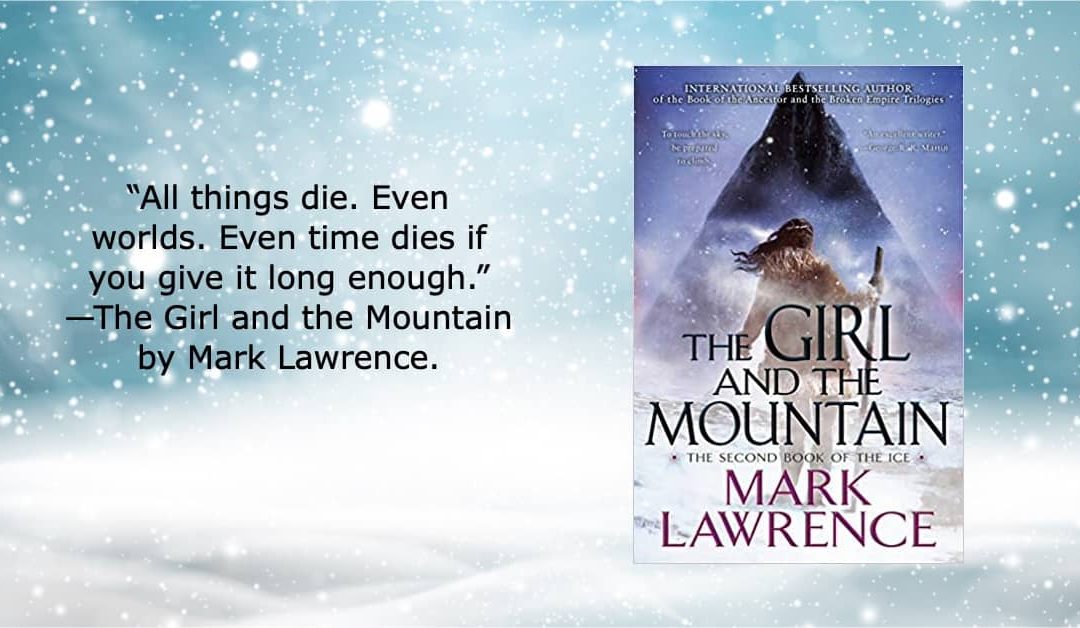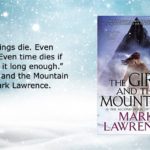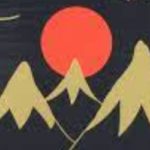The Girl and the Mountain is the second book in Mark Lawrence’s Book of the Ice Series, preceded by The Girl and the Stars and will be followed by The Girl and the Moon—set to release April 12, 2022. The story involves a young girl who goes on a long journey that reveals a dark truth about herself and what she’s been led to believe her whole life. For me this is a story about humanity, generosity, and compassion; and the importance of putting other people’s needs ahead of our own. At its core I believe it speaks to the dangers of greed and selfishness, and, gives a well-heeded warning to our reach for immortality and godlike powers through AI.
It’s a fantastic and clever series seemingly foreshadowed during the first chapter in The Girl and the Stars, during which the protagonist Yaz was on a long journey to the Pit of the Missing. I have to say I absolutely loved every part of this book!
I’m not sure if it was planned this way; my understanding of Mark Lawrence’s writing style is that he is more of a pantser and has an understanding of where the plot is going about a third of the way through the book, but I could see him having an understanding of where the series would be going the same way one would have an instinct for story. And I’m sure that by now he’s internalized story structure quite well, given the amount of books that he’s written.
Rich with mythological tales of its own, this book is filled with exciting revelations and worldbuilding that makes us question ourselves today, and an ending that is both wonderful and shocking in their own two ways. I wholly enjoyed this and though I can’t wait for the ending, I do have to say I am a little scared.
Though the main travel party consists of Yaz, Thurin, Quina, Maya, Erris, and a mechanical dog named Zox, there are many other characters throughout the book as well. Zeen, Hetta, Kaylal, and Regulator Kazak from the first Book of the Ice are present, along with many other characters that give great surprise if you’ve been following along.
But the most interesting character, for me, in this book was Theus. A spirit made from the most undesirable traits of the Missing, called Prometheus after his “rebirthing”, wants to use Yaz for his own special purposes. I don’t know how all of this is going to end, but one can’t help to understand where he’s coming as we learn more about his past.
It starts out recapping book one with an overview of the magic system, the different clans, and notable characters. The story follows Yaz and her search for the greenlands and begins through multiple points of view between Thurin, Quell, and Yaz—as Yaz has been taken captive and is being held up at the Black Rock.
Yaz wakes with fractured memories of Eular and the cage and how they were not far behind. She is being interrogated by the priest Eular of the Black Rock when word arrives that strangers are approaching the east gate. The story continues on for some time, shifting points of view and converging with a single goal in mind: to rescue Yaz.
As food and resources continue to dwindle on the planet Abeth, there isn’t enough to go around for everyone. The priests and the others are becoming desperate; and unless they can take the greenlands, it will surely mean the end for their kind. The purpose of the Pit of the Missing is to create “heroes” as Eular explains, or simply warriors. This is something the priests have been preparing for generations. They take those with special talents and skills and place them under immense pressure inside the Pit to create something formidable for them to take the greenlands with.
This may go without saying, but there is also much conflict having to do with human vs nature. As the ice planet is dwindling on resources that people are willing to fight to the death over, there is much that can go wrong on a long journey such as this. The white death—a great snowstorm—being one of them. There are also great monsters to tend without in the wild, not all of them natural.
But the greater conflict of this story, however, has more to do with the Missing. As we’ve learned from the first Book of the Ice, long ago the descendants of Yaz and other humans on Abeth purified themselves from all their evil natures and departed for some kind of utopia they would create. Not wanting any chance of the vile and wickedness of man to infect and pollute their new society, Sues—a godlike figure— was given a sacred task: none shall follow. Just as the city of Vesta had gone insane so too, has the rest of the ancient’s technology. And when orders are defended to the extreme without question, terrible tragedies will arise.
Unfortunately, nothing ever goes according to plan—for the most part. What had remained of Prometheus, one of the last to depart during the final ascension—Theus—leaked out from the containment vats and took hold to wreak havoc, as his goals didn’t seem to align with everyone else’s.
One of the most wonderful parts of the book that I enjoyed was how this story tied in so well with The Book of the Ancestor Series. All of Lawrence’s books are tied together The Broken Empire fits well with The Red Queen’s War, with Jorg, Prince of Thorns, making an appearance in The Wheel of Osheim. But this is connected in an entirely other way that features characters from The Red Sister and other books throughout the trilogy.
It was particularly wonderful to discover what time period this series takes place. There were many amazing and thrilling moments for me throughout the book, but the discovery of when it took place was perhaps the most amazing, almost nostalgic in a way. If you’re in search of a great adventure story about a journey with thought-provoking conflict and a world filled with culture and complexity, check out the second Book of the Ice by Mark Lawrence.



